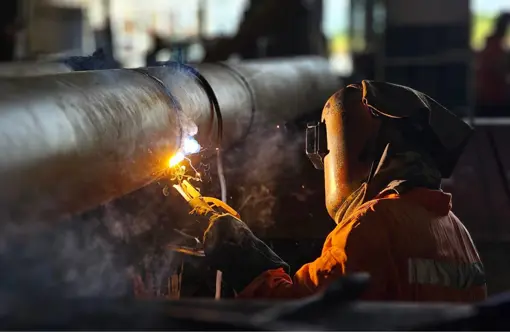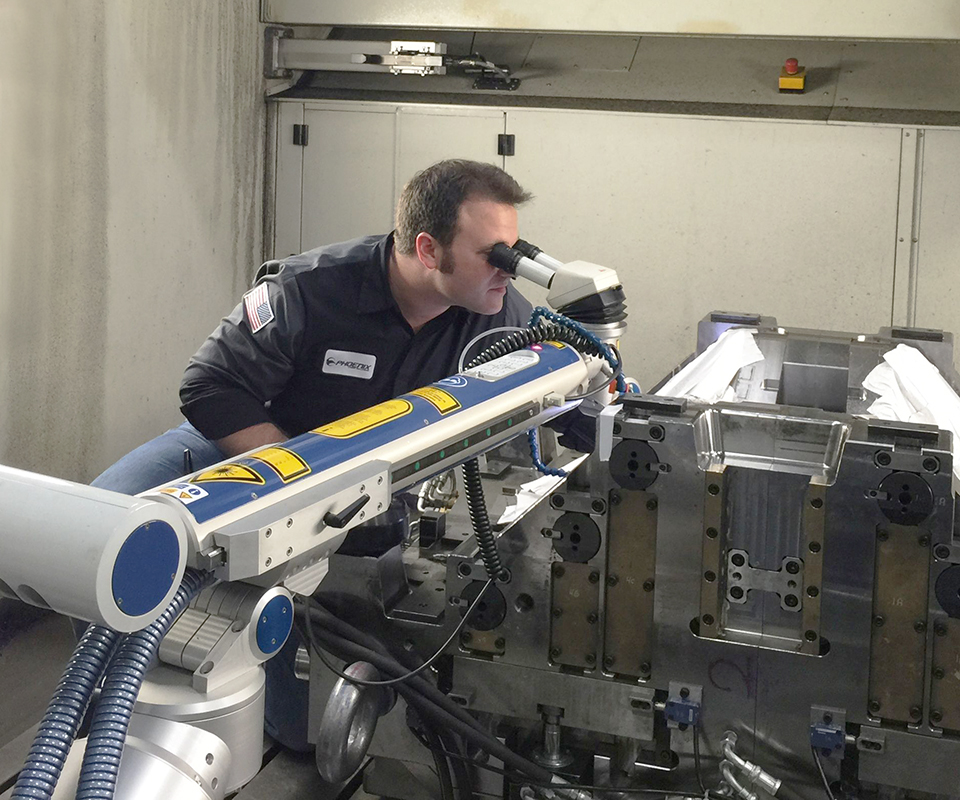Typical Welding Repair Service Issues and Exactly How to Address Them Properly
Welding repair services usually encounter a variety of issues that can endanger the honesty of the end product. Typical issues include poor penetration, porosity, and misalignment, amongst others. Each defect offers distinct challenges that need specific techniques for resolution. Comprehending these problems is crucial for welders aiming to improve their abilities and results. This discussion will certainly discover these typical welding fixing concerns and reliable methods to resolve them.
Inadequate Infiltration
Insufficient infiltration takes place when the weld metal falls short to fully fuse with the base product, resulting in weak joints and prospective structural failings. This concern often originates from not enough warm input, inaccurate electrode angle, or incorrect welding speed. Welders may come across insufficient penetration due to a mistake of the required specifications for a details material density or kind. Furthermore, contamination on the base product's surface can hinder effective bonding, intensifying the issue. To attend to insufficient penetration, welders must guarantee ideal setups on their tools and preserve a clean job surface. Routine examination of welds is recommended to recognize any type of deficiencies early, allowing for timely improvements and the prevention of compromised structural honesty in welded settings up.
Porosity
Porosity is a typical issue in welded joints that materializes as tiny gas bubbles trapped within the weld steel. This defect can compromise the honesty of the weld, leading to lowered stamina and prospective failure under stress and anxiety. Belgrade Welding. Porosity normally arises from contamination, moisture, or inappropriate welding methods, which permit gases to escape into the liquified weld swimming pool. To deal with porosity, welders must assure appropriate surface prep work, keep a tidy working setting, and utilize suitable welding criteria. In addition, selecting the right filler material and securing gas can minimize gas entrapment. Normal inspection and testing of welds can help determine porosity early, ensuring timely rehabilitative activities are taken, consequently protecting the top quality and reliability of the welded framework
Misalignment
Misalignment in welding can develop from numerous aspects, including inappropriate configuration and thermal expansion. Understanding the origin is crucial for efficient resolution. Numerous improvement strategies are readily available to straighten parts and assure structural honesty.
Sources of Imbalance
Welding imbalance often originates from a range of underlying issues that can compromise structural stability. One primary cause is improper fit-up of elements prior to welding, which can cause voids and unequal surfaces. Variations in thermal development throughout the welding procedure can also result in distortion, specifically if the materials being signed up with have different coefficients of development. In addition, poor fixturing and clamping may stop working to hold components firmly in place, causing activity throughout welding. Poorly maintained devices, consisting of welding machines and tools, may present variances in the weld grain, more adding to misalignment. Ultimately, operator mistake, stemming from insufficient training or experience, can additionally play a considerable function in producing misaligned welds.
Improvement Strategies Readily Available
Resolving imbalance effectively needs a mix of rehabilitative methods customized to the particular problems at hand. One usual method is the usage of jigs or fixtures to hold components in the right position during welding, ensuring consistent alignment. Furthermore, preheating the materials can help in reducing distortion and boost fit-up. For considerable imbalance, mechanical realignment methods, such as utilizing hydraulic jacks or clamps, can be utilized to deal with the position before welding. Post-weld heat therapy may also be needed to eliminate stress and anxieties triggered by misalignment. Careful examination and adjustment throughout the configuration stage can avoid misalignment concerns from coming to be considerable troubles, advertising a smoother welding procedure and boosting overall structural integrity.
Distortion
Distortion is an usual obstacle in welding that can develop from numerous variables, including unequal home heating and air conditioning. Recognizing the root causes of distortion is vital for implementing effective avoidance strategies. Resolving this problem not just improves architectural honesty however additionally improves the general top quality of the weld.
Sources of Distortion
When subjected to the intense warmth of welding, products often undertake adjustments that can cause distortion. This sensation primarily occurs from thermal growth and tightening throughout the welding procedure. As the weld location warms up, the material expands; upon air conditioning, it acquires, which can create internal tensions. Additionally, irregular home heating across a workpiece can worsen these tensions, resulting in warping or bending. The sort of material additionally plays a considerable function; metals with varying thermal conductivity and coefficients of development might react in a different way, resulting in unforeseeable distortions. Additionally, bad joint design and insufficient fixturing can add to misalignment during welding, boosting the probability of distortion. Comprehending these causes is vital for efficient welding repair and avoidance approaches.
Prevention Techniques
Efficient prevention techniques for distortion during welding focus on regulating heat input and ensuring appropriate joint design. Keeping a consistent warm input helps to minimize thermal development and contraction, which can result in distortion. Utilizing techniques such as preheating the workpiece can likewise decrease the temperature level gradient, advertising consistent home heating. Furthermore, choosing proper joint layouts, such as T-joints or lap joints, can improve security and minimize stress concentrations. Applying proper fixturing to safeguard the work surfaces in position even more aids in preserving placement during the welding process. Finally, staggered welding series can disperse heat more evenly, protecting against localized distortion. By applying these strategies, welders can considerably lower the possibility of distortion and boost the overall high quality of their welds.
Breaking
Splitting is a common problem come across in welding repair services, typically arising from various elements such as improper air conditioning prices, product selection, or insufficient joint prep work. The incident of splits can greatly compromise the integrity of the weld, resulting in prospective failings during operation. To resolve this issue, welders have to first analyze the root creates, making sure that materials are suitable and suitably selected for the particular application. In addition, managing the air conditioning price during the welding procedure is vital; fast air conditioning can induce stress and bring about cracking. Correct joint layout and preparation also add to decreasing the threat. Executing these methods can boost weld top quality and sturdiness, ultimately reducing the likelihood of cracking in ended up weldments.

Incomplete Blend
A significant problem in welding fixings is insufficient fusion, which takes place when the weld steel does not appropriately bond with the base material or previous weld passes - Fabrication. This flaw can cause weak points in the joint, potentially compromising the integrity of the bonded structure. Elements adding to incomplete fusion consist of not enough heat input, incorrect welding technique, and contamination of the surface areas being signed up with. To resolve this problem effectively, welders should guarantee correct pre-weld cleansing and surface preparation, in addition to readjust their welding parameters to attain sufficient penetration and combination. Routine examination during the welding procedure can likewise aid recognize incomplete blend early, enabling timely restorative procedures to improve the overall top quality of the weld
Overheating
While welding repair work can boost architectural stability, overheating offers a considerable difficulty that can bring about material deterioration. Excessive heat during welding can change the mechanical properties of metals, resulting in lowered stamina, enhanced brittleness, and bending. This sensation is particularly crucial in high-stress applications where structural integrity is extremely important. Identifying overheating can involve visual evaluations for discoloration or distortion, as well as keeping track of temperature level throughout the welding process. To mitigate the threats connected with getting too hot, welders need to utilize ideal methods, such as regulating heat input, changing travel speed, and making use of appropriate filler materials. In addition, applying pre- and post-weld warmth therapies can aid restore material residential properties and boost the general high quality of the repair, making certain long-term performance and safety.
Regularly Asked Questions
What Are the Common Signs of a Welding Defect?

Just How Can I Evaluate My Welds for Quality?
To check welds for top quality, one can use visual examinations, ultrasonic screening, and radiographic methods. Each method ensures architectural honesty, identifies defects, and confirms adherence to defined criteria, inevitably boosting the reliability of the welded joints.
What Safety and security Preventative Measures Should I Take While Welding?
When welding, one need to focus on safety by putting on appropriate personal protective tools, making certain appropriate ventilation, safeguarding combustible products away, maintaining a tidy work area, and recognizing environments to avoid injuries and mishaps.
Can I Fix a Weld Without Renovating the Entire Joint?
Fixing a weld without renovating the entire joint is possible, depending on the damage (Montana Mobile Welding and Repair Welding). Strategies such as grinding, including filler product, or using a welding procedure can efficiently attend to particular flaws while preserving the surrounding structure
What Devices Are Important for Reliable Welding Fixes?
Crucial tools for reliable welding repair work include a welding maker, cable brush, grinder, safety equipment, clamps, and filler products. Each device plays an important function in guaranteeing high quality and safety during the repair process. Porosity usually occurs from contamination, moisture, read more or inappropriate welding strategies, which enable gases to get away into the liquified weld pool. Improperly maintained equipment, including welding devices and tools, may present inconsistencies in the weld bead, more contributing to imbalance. When subjected to the intense warm of welding, products typically undergo changes that can lead to distortion. Breaking is an usual concern come across in welding repair work, typically resulting from various factors such as inappropriate air conditioning rates, material selection, or poor joint prep work. A considerable concern in welding fixings is incomplete blend, which happens when the weld steel does not appropriately bond with the base product or previous weld passes.